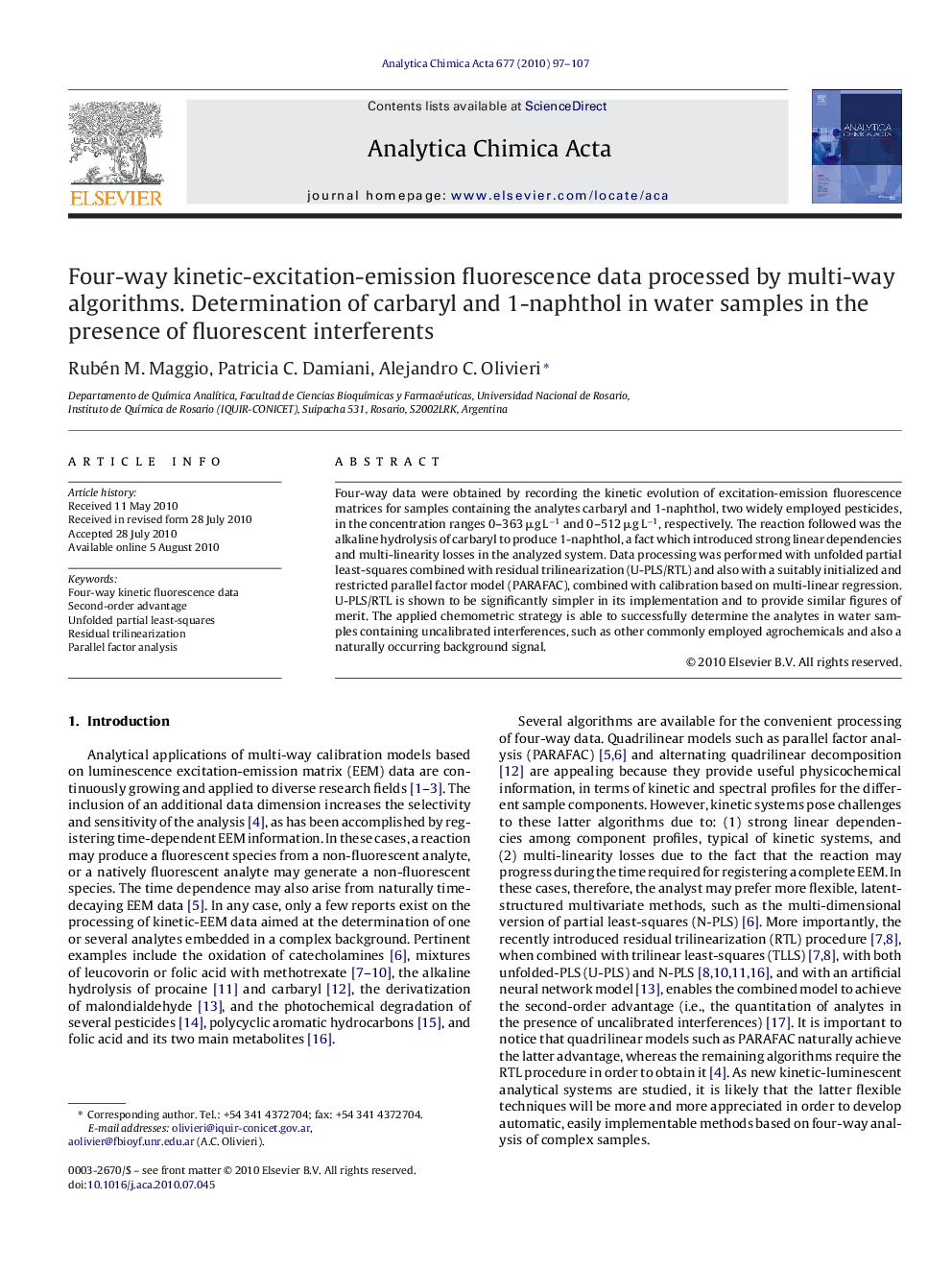| Article ID | Journal | Published Year | Pages | File Type |
|---|---|---|---|---|
| 1167153 | Analytica Chimica Acta | 2010 | 11 Pages |
Abstract
Four-way data were obtained by recording the kinetic evolution of excitation-emission fluorescence matrices for samples containing the analytes carbaryl and 1-naphthol, two widely employed pesticides, in the concentration ranges 0-363 μg Lâ1 and 0-512 μg Lâ1, respectively. The reaction followed was the alkaline hydrolysis of carbaryl to produce 1-naphthol, a fact which introduced strong linear dependencies and multi-linearity losses in the analyzed system. Data processing was performed with unfolded partial least-squares combined with residual trilinearization (U-PLS/RTL) and also with a suitably initialized and restricted parallel factor model (PARAFAC), combined with calibration based on multi-linear regression. U-PLS/RTL is shown to be significantly simpler in its implementation and to provide similar figures of merit. The applied chemometric strategy is able to successfully determine the analytes in water samples containing uncalibrated interferences, such as other commonly employed agrochemicals and also a naturally occurring background signal.
Related Topics
Physical Sciences and Engineering
Chemistry
Analytical Chemistry
Authors
Rubén M. Maggio, Patricia C. Damiani, Alejandro C. Olivieri,
